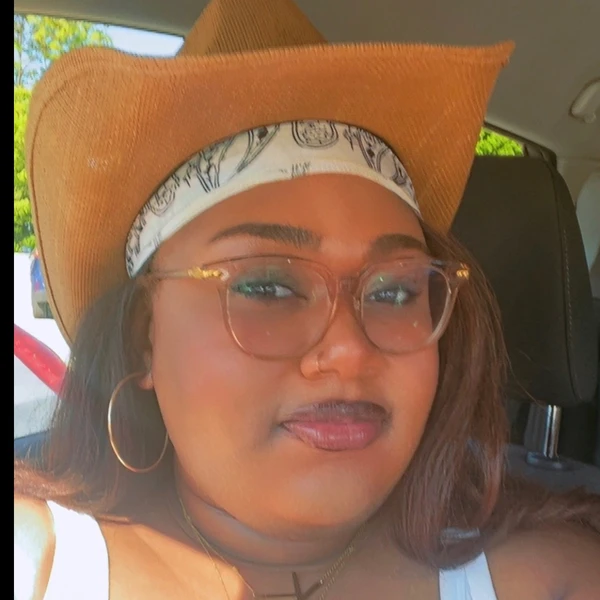At 18, I found myself lying on the cold kitchen floor, gasping for air as a wave of panic overtook my body. My heart pounded uncontrollably, and I couldn’t catch my breath. At that moment, I thought I might die. I didn’t fully understand what was happening to me, I only knew that everything felt overwhelming and terrifying. That severe panic attack was a turning point in my life, forcing me to confront something I had avoided for years: my mental health.
Before that day, I had spent most of my life feeling "off," like something was wrong with me, but I couldn’t explain it. From a young age, I struggled to focus, felt anxious in situations that didn’t seem to bother anyone else, and constantly battled a sense of restlessness and exhaustion. But no one talked about mental health in the world around me, and I didn’t have the language or support to understand what I was going through. For years, I simply thought I was lazy, broken, or not trying hard enough.
My struggles came to a head when I went away to college at the age of 17. What should have been an exciting new chapter quickly turned into one of the darkest periods of my life. Isolated and overwhelmed, I sank into a deep depression. I couldn’t leave my bed, couldn’t bring myself to take out the trash, or complete simple daily tasks. I skipped classes, withdrew from friends, and felt utterly numb. The world outside my dorm room felt impossibly far away, and inside, I was trapped in my own mind. I felt completely alone and lost.
Eventually, I flunked out of college. I came home feeling defeated and ashamed. I still didn’t fully understand why everything had spiraled out of control. It wasn’t until that panic attack in my kitchen that I began to realize I needed help. That moment led me to seek therapy for the first time, a decision that would ultimately change the entire trajectory of my life.
Through therapy and a lot of personal work, I began to unravel the knots of anxiety, depression, and self-doubt that had been holding me back. A critical piece of this journey came later when I was finally diagnosed with AUDHD as an adult. That late diagnosis was both painful and freeing. Suddenly, so many pieces of my past, my constant sensory overwhelm, my executive functioning struggles, my need for routines, my deep empathy and creativity, made sense. I wasn’t broken; I had a neurodivergent brain that needed understanding, not shame.
This journey through mental health challenges and self-discovery has profoundly shaped my life goals. Before addressing my mental health, I had no clear sense of what I wanted to do. I bounced between paths based on what others expected of me or what seemed “safe.” But through understanding myself better, I’ve discovered a true passion for storytelling, creativity, and helping others feel seen and understood.
My goal now is to build a career where I can use art, writing, and media to explore human experiences and foster empathy. I want to create work that resonates with people who, like me, may have felt invisible or misunderstood. Whether through visual storytelling, museum work, or educational outreach, I aim to contribute to spaces where conversations about mental health, identity, and resilience are welcomed and valued.
My mental health journey has also deeply impacted my relationships. Before therapy, I struggled to maintain healthy connections. Anxiety made me withdrawn and hypervigilant, while undiagnosed ADHD and sensory issues often left me overwhelmed and reactive in social situations. I carried a lot of guilt about being a “bad friend” or “bad family member.” Now, with greater self-awareness, I approach relationships differently. I communicate more openly about my needs and boundaries. I understand the importance of rest, sensory breaks, and honest conversations. I’ve learned to be more compassionate toward both myself and others, recognizing that everyone is navigating their own unseen battles.
Perhaps most importantly, my experiences have radically changed how I understand the world. I used to think that success meant perfection, that I had to be constantly achieving, and constantly performing. Mental health struggles taught me the value of resilience over perfection, and the importance of meeting people where they are, not where we expect them to be.
I now see the world through a more empathetic lens. I understand how systems of support, or lack thereof, shape people’s opportunities and well-being. I’ve experienced firsthand how stigma and silence around mental health can isolate individuals and prevent healing. That’s why I am committed to being open about my journey and advocating for greater awareness and acceptance. If sharing my story helps even one person feel less alone, it’s worth it.
Academically, my path has not been linear. After returning to school, I struggled at first. I had to relearn how to navigate the academic world while managing my mental health and accommodating my neurodivergence. At one point, my GPA was 2.1, and I often questioned whether I belonged in college at all. But I kept going. I sought out resources, built supportive routines, and permitted myself to learn in ways that worked for me. Slowly, my grades improved, and with them, my confidence. Today, I hold a 3.0 GPA, a number that represents not just academic progress, but resilience, growth, and self-acceptance.
Mental health will always be a part of my story. It has shaped who I am and how I move through the world. It has taught me that healing is not linear, that progress is worth celebrating in all its forms, and that vulnerability is a powerful tool for connection. As I continue my education and pursue my career goals, I carry these lessons with me. I hope to create spaces, where others feel safe to share their stories and embrace their full, authentic selves. And I am deeply grateful for the opportunity to keep growing, learning, and contributing along the way.

